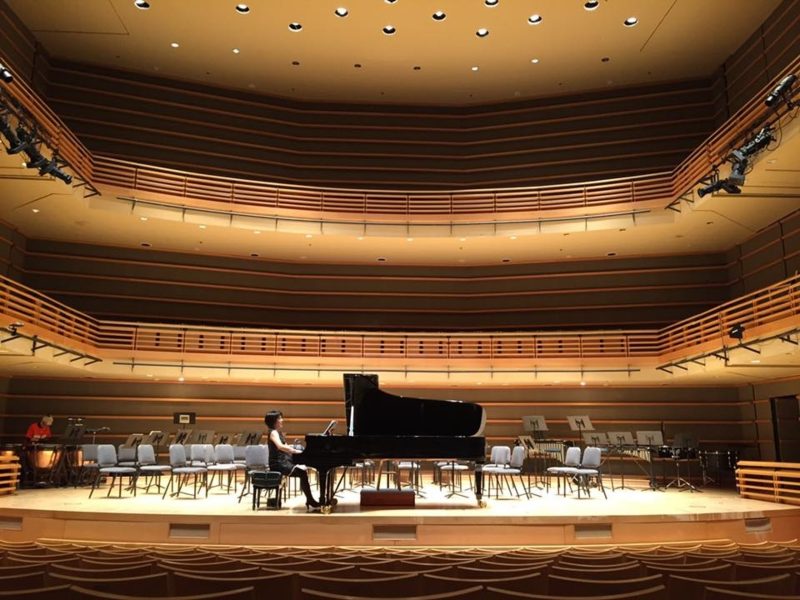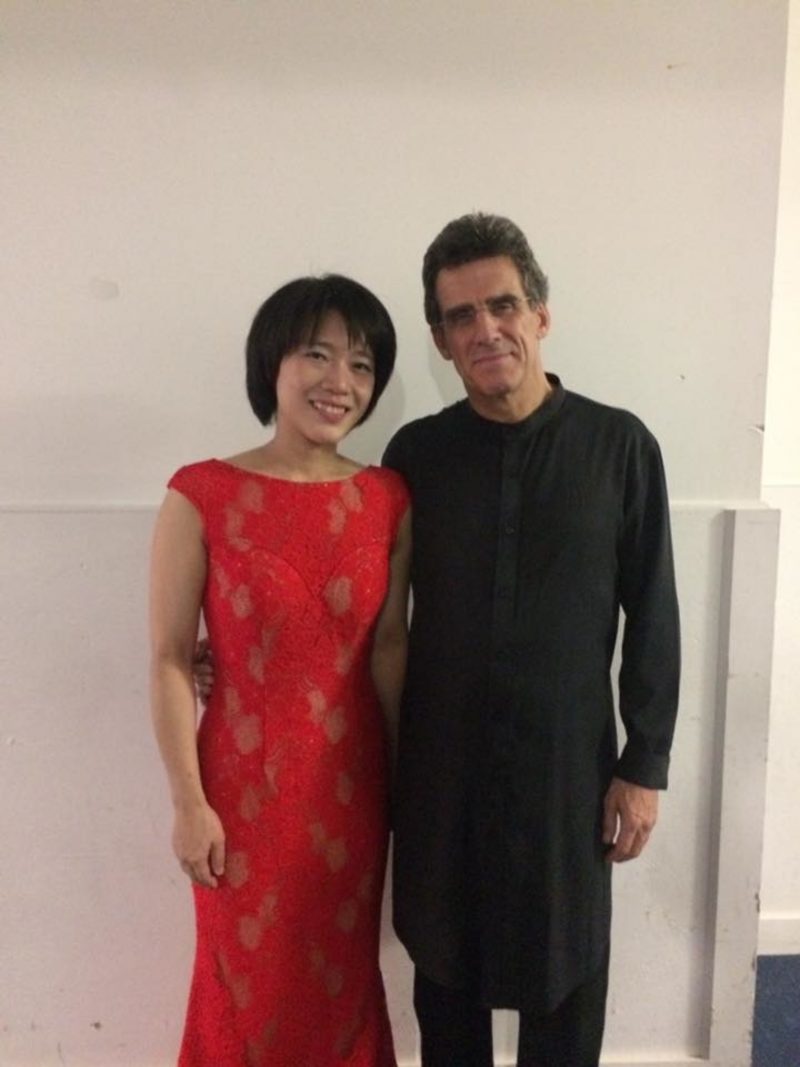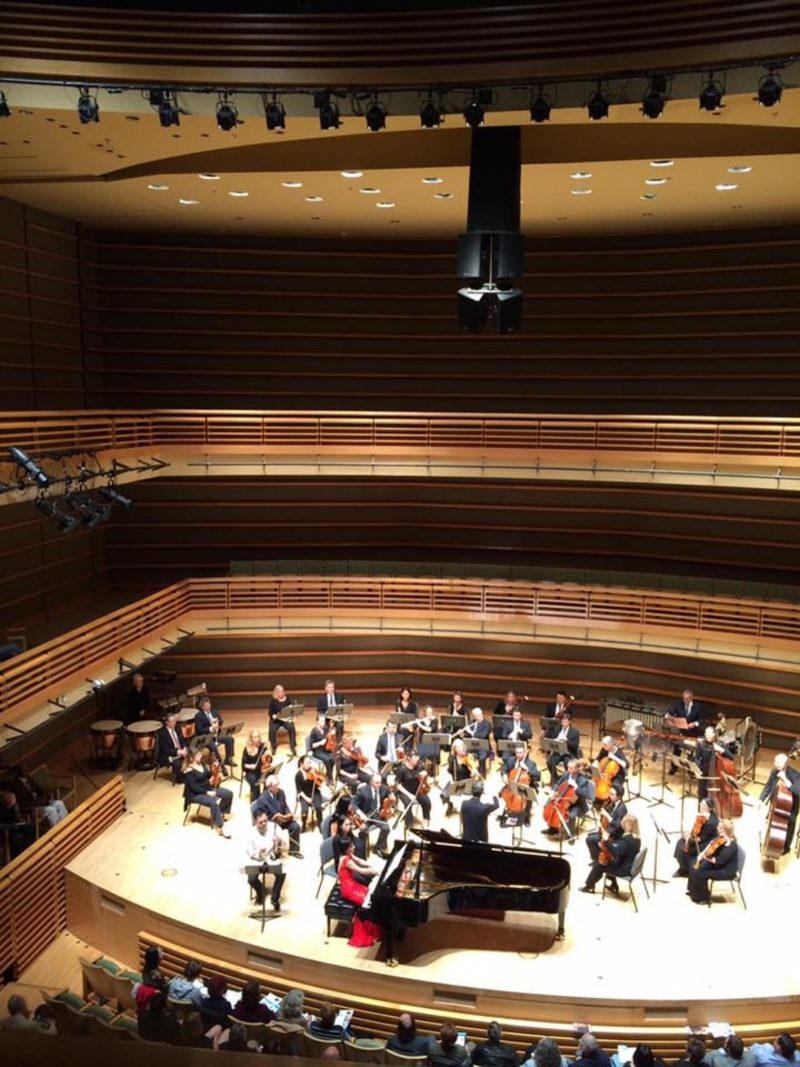
Since 1762, Wolfgang Amadeus Mozart has intrigued us as much as for his personality as for his effortlessly brilliant compositions. Some of that interest could be attributed to one of my favorite films, Amadeus (1985 Academy Award winner for Best Picture). It could also have something to do with the fact that he mastered playing and composing music at such a precociously early age. His life ended at just 35, and his accomplishments up to that point hinted at yet more musical promise. The Chamber Orchestra of Philadelphia’s opening concert confronts Mozart’s complex sensibility through the lens of his contemporaries’ music, and even includes a world premiere.
Mozart’s modern echoes
The program opened with Jacques Ibert’s Hommage à Mozart, composed in 1956 as part of a commission by the French national radio for the bicentennial of Mozart’s birth. The orchestral suite (which I found to be a spiritual cousin of another 1956 composition, Leonard Bernstein’s Overture to Candide) was full of nods to Mozart’s unmatched ability to pair the playful and the dramatic.
Just like last season’s opener, this year’s opening concert turns the spotlight on a piano soloist. Ching-Yun Hu (currently on the piano faculty at Temple University’s Boyer College of Music & Dance) takes the reins for this occasion, performing Mozart’s Piano Concerto No. 23 in A Major and Yiu-kwong Chung’s world premiere of Red Cliff, Concerto for Piano and Orchestra.

Hu plays the piano with the grace of a ballerina, conveying Mozart’s phrases with a delicate touch. The orchestra effectively used a range of dynamics and varying volumes to balance whenever a repeated line by Mozart arrived to show a clear contrast, especially in the lyrical second movement. Mozart’s Piano Concerto No. 23 isn’t usually played in such a low-key way, but Hu probably opted to save some energy for Red Cliff.
Red Cliff is a piano concerto in one movement with four uninterrupted sections. It takes inspiration from The Romance of the Three Kingdoms, a classic 15th-century historical novel from China. Set during the chaotic Three Kingdoms period at the conclusion of the Later Han Dynasty (25–220 AD), each of the four sections introduces a new chapter dealing with three warlords who are contending for control of the empire.
The work featured beautiful playing by erhuist Andy Lin (an erhu is a two-stringed instrument played with a bow, which was introduced in China). In the final section, Chung doubled Hu’s line with Lin; as a result, it was difficult to hear him over the piano and orchestra. This explosive section of Red Cliff allowed Hu to showcase her virtuosic abilities. Red Cliff ended in a sudden three-note sprint that felt abrupt yet still satisfying at the same time.

Mozart’s contemporaries
Fourth on the program was Juan Crisóstomo Arriaga’s Overture to Los esclavos felices. Arriaga is known as the Spanish Mozart with good reason. Both composers got their start at a precociously young age, and died young (Arriaga barely made it to 20). In his serene Overture to Los esclavos felices (a two-act opera he composed at 13), Arriaga’s structure is firmly in the Classical period, full of cheery melodies. However, his music hints at the expressive Romantic period to come.
For the Arriaga overture, up-and-coming conductor Geoffrey McDonald led the Chamber Orchestra as a guest conductor. In contrast to Dirk Brossé’s more animated manner, McDonald conducted with broad strokes. I noticed that if you listen closely to Brossé as he conducts, you can hear him humming along with a melodic orchestral part (this was evident particularly during Haydn’s Symphony No. 99).
This brings us finally to Franz Joseph Haydn, known as the Father of both the Symphony and the String Quartet. His 99th Symphony (Symphonies No. 93-104 are referred to as the London Symphonies) is significant because it was the first one Haydn scored for clarinets. Legend has it that Mozart, who had used clarinets a tad more prominently, encouraged his mentor Haydn to score clarinets into his symphonies (talk about a situation of the mentee guiding the teacher!). According to Eric Hoeprich’s The Clarinet, there was a healthy supply of clarinetists throughout the Western world. However, even though there were lots of players, many of them were not the supreme talents that Haydn desired. As a result, Haydn featured the clarinet part in only four more symphonies following Symphony No. 99. This was due to the presence of Christopher Eley (a London native), one of the few masters on the clarinet at the time of its 1794 premiere that Haydn trusted.
The fourth movement of Haydn’s Symphony No. 99 reminded me why I love chamber music. The first and second violin, viola, and cello lines resemble those of Haydn’s pioneering string quartets. The fourth movement could be made into a string quartet reduction and it would work just as effectively.
In their opening concert, the Chamber Orchestra of Philadelphia created a wonderful bridge between the Classical Period and the present, showing how Mozart’s legacy lives on. The Big Three composers of the Classical period were Beethoven, Haydn, and Mozart (Beethoven got the short end of the stick on this go around, but he will feature prominently in May 2017 in a performance at the Philadelphia Museum of Art). Haydn once wrote of Mozart that “posterity will not see such a talent again in 100 years,” and he could well be on the money there. What the Chamber Orchestra of Philadelphia has accomplished as a consolation is to show us that the soul of Mozart continues to pour into music, no matter what period or style.
For more information about the Chamber Orchestra of Philadelphia’s 2016-2017 season, check out their website. Performances take place at the Perelman Theater at the Kimmel Center of the Performing Arts, 300 S. Broad St, Philadelphia, PA, 19102.









